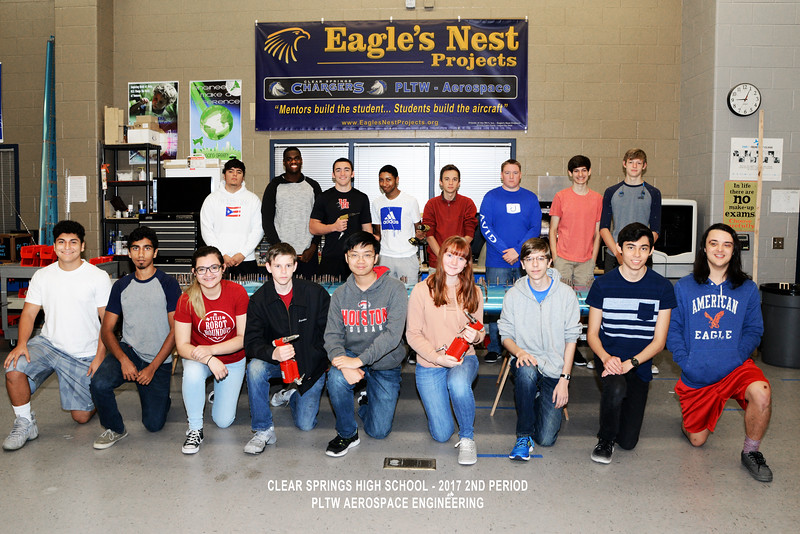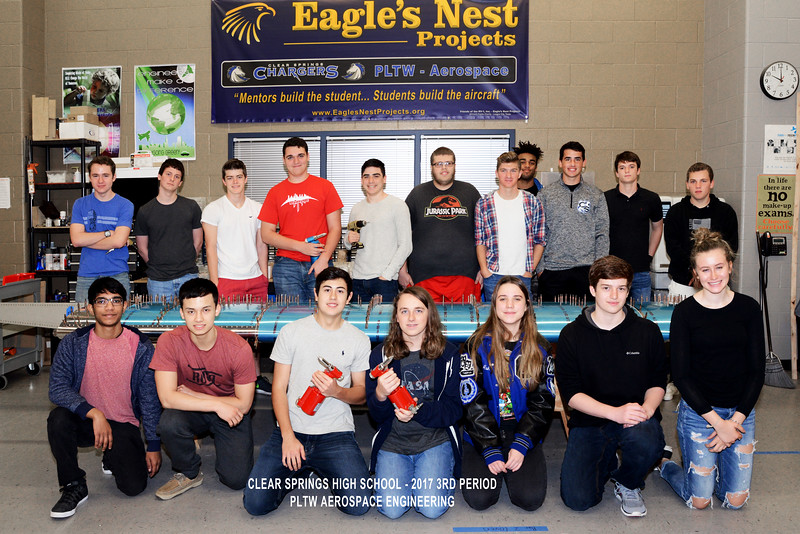Special Delivery
Well Known Member
A teachable moment is an unplanned opportunity that arises in the classroom where a teacher/mentor has an ideal opportunity to offer insight to his or her student(s). A teachable moment is not something you can plan for; rather, it is a fleeting opportunity that must be sensed and seized by the teacher/mentor. Eagle?s Nest Projects is unique in that it provides an abundance of ?teachable moments? in teamwork, character, problem solving, safe and correct use of tools, pride in a job well done, and much more.
The primary reward of being a teacher/mentor is being able to see the results of your hard work in action. The students you teach today move on and new students replace them making these opportunities sometimes few and far between. Wednesday was a Double Reward day for the Eagle?s Nest mentors at Clear Springs High School (TX) and we thought you might enjoy sharing in the moment.
Setting the Stage ? David Grover, lead mentor and 4-time Eagle?s Nest offender, set the stage and organized a challenge; Left wing: bottom skins clecoed and ready to rivet and top skins prepped. Right wing: bottom skins prepped and ready to install. Two 55 minute class periods with 18 students in each period.
The Challenge ? Within the two 55 minute period time frame, students must team among themselves, assign tasks, define work flow, (1) rivet bottom skins and cleco top skins on left wing and (2) complete install and rivet of bottom skins on right wing.
Curtain Call ? Challenge met with only 8 clecos remaining in the right wing!
[Group photo taken following morning - many students were still working when the end of class bell rang and a photo op was low priority.]
Clear Springs High School (TX) ? 2nd Period PLTW Aerospace Engineering

Clear Springs High School (TX) ? 3nd Period PLTW Aerospace Engineering

The primary reward of being a teacher/mentor is being able to see the results of your hard work in action. The students you teach today move on and new students replace them making these opportunities sometimes few and far between. Wednesday was a Double Reward day for the Eagle?s Nest mentors at Clear Springs High School (TX) and we thought you might enjoy sharing in the moment.
Setting the Stage ? David Grover, lead mentor and 4-time Eagle?s Nest offender, set the stage and organized a challenge; Left wing: bottom skins clecoed and ready to rivet and top skins prepped. Right wing: bottom skins prepped and ready to install. Two 55 minute class periods with 18 students in each period.
The Challenge ? Within the two 55 minute period time frame, students must team among themselves, assign tasks, define work flow, (1) rivet bottom skins and cleco top skins on left wing and (2) complete install and rivet of bottom skins on right wing.
Curtain Call ? Challenge met with only 8 clecos remaining in the right wing!
[Group photo taken following morning - many students were still working when the end of class bell rang and a photo op was low priority.]
Clear Springs High School (TX) ? 2nd Period PLTW Aerospace Engineering

Clear Springs High School (TX) ? 3nd Period PLTW Aerospace Engineering





